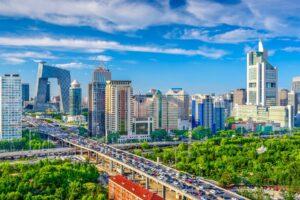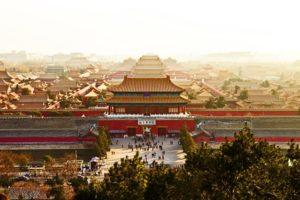Fodor's Expert Review 798 Art District
Chinese contemporary art has exploded in the past decade, and to see some of the finest examples of the scene look no further than 798 Art District, located in the northeast corner of the city. This was once the site of several state-owned factories, including Factory 798, that produced electronics. Beginning in 2002, artists and cultural organizations began to move into the area, gradually developing the old buildings into galleries, art centers, artists' studios, design companies, restaurants, and bars. Note that most if not all of the galleries here are closed on Mondays.
Experimenting with classical mediums such as paint and printmaking as well as forays into new and digital media, installation, and performance art, young Chinese artists are caught between old and new, Communism and capitalism, urban and rural, rich and poor, and East and West. These conflicts set the stage and color their artistic output, with varying results. Although more and more Chinese... READ MORE
Chinese contemporary art has exploded in the past decade, and to see some of the finest examples of the scene look no further than 798 Art District, located in the northeast corner of the city. This was once the site of several state-owned factories, including Factory 798, that produced electronics. Beginning in 2002, artists and cultural organizations began to move into the area, gradually developing the old buildings into galleries, art centers, artists' studios, design companies, restaurants, and bars. Note that most if not all of the galleries here are closed on Mondays.
Experimenting with classical mediums such as paint and printmaking as well as forays into new and digital media, installation, and performance art, young Chinese artists are caught between old and new, Communism and capitalism, urban and rural, rich and poor, and East and West. These conflicts set the stage and color their artistic output, with varying results. Although more and more Chinese artists are achieving international recognition, 798 still abounds with knockoffs of bad Western art. Nevertheless the area remains the hub of contemporary creative arts in Beijing and is definitely worth a visit if you're at all interested in the state of the arts in China.
Although the scene was at first a completely DIY affair, the quality of art produced and international media attention starting from the early 2000s meant that the district government took notice. Eventually the area was declared a protected arts district, paving the way for commercial galleries, cafés, and souvenir shops. Priced out of their original studios, many working artists have decamped further afield to the Caochangdi and Songzhuang neighborhoods. Both of these smaller areas are worth visiting, though neither is easily accessible except via taxi. Ask your hotel concierge for a detailed map or, better yet, call ahead to the galleries you're interested in visiting and get driving instructions.
798 is more accessible, however, and eminently walkable. Keep in mind that cabs are prohibited from driving into the complex, and much of the area is pedestrianized. Though it's also open Tuesday through Friday, most people visit on the weekend.
Many of the galleries there now are hit or miss, but establishments such as the Ullens Center for Contemporary Arts (UCCA) put on informative, challenging exhibitions.
READ LESS







